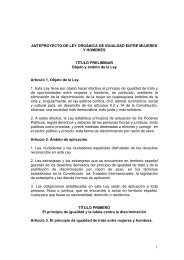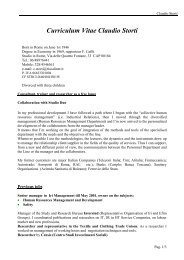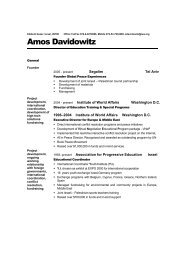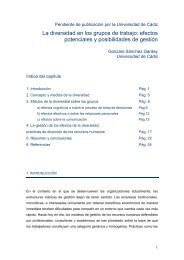Cultural dimensions - IMD
Cultural dimensions - IMD
Cultural dimensions - IMD
You also want an ePaper? Increase the reach of your titles
YUMPU automatically turns print PDFs into web optimized ePapers that Google loves.
Maznevski et al.: <strong>Cultural</strong> Dimensions at the Individual Level of Analysis 279assumptions about how the world works. Suchassumptions are naturally a reflection of theculture to which that individual belongs; assuch the individual is reporting on his or herculture. It is important to note that theseassumptions are typically not questioned,nor are they even normally discussed. Forexample, in a society dominated by theActivity–doing, most people would know that,‘of course’, humans’ basic nature is toachieve and keep busy, and perhaps if theability to achieve and work towards goalswere removed from people, they and theirsociety would suffer from severe trauma andbreakdown (see Marx’s Communist Manifesto inCowling, 1998).Second, values generally focus on thevalue-holder him- or herself. Values aremotivators of individual behavior. For example,someone who values ‘helpful’ is motivatedto be helpful, derives satisfaction frombeing helpful, and fulfills a personal needwhen being helpful. <strong>Cultural</strong> orientationsalso comprise the individuals’ assumptionsabout social organization and elements outsidethe individual. The orientations serve asperceptual filters that screen information andpotential choices about behavior (Erez andEarley, 1993), and provide scripts for socialinteraction (Maznevski and Peterson, 1997).The cultural orientations frameworkthrough an understanding of values will helpus understand individual motivations, andwill illuminate many elements of individualbehavior alone and in social settings, withinand across cultures (Schwartz, 1992, 1994;Schwartz and Bilsky, 1990; Schwartz andSagiv, 1995). In addition, the cultural orientationswill provide an understanding ofsocial behavior patterns, organized systemsand decision-making.Given the above review of literature andour comparison between the cultural orientationand other approaches, we expect to findseveral important results when testing thecultural orientations framework with datafrom five countries. First, we expect thevariations within and across orientations tobe conceptually independent. Second, weexpect there to be variations within orientationswithin each country included in thestudy. Finally, we expect to find betweencountrydifferences on the variations withinorientations. These differences should be inline with the research that has been conductedon cross cultural values differences(Hofstede, 1980; Ronen and Shenkar, 1985),but should also add richness to prior explanations.These results will provide validity tothe cultural orientations framework.MethodologyTo gain some initial empirical evidence forevaluating the utility of the cultural orientationsframework in cross cultural research,we measured the orientations and their variationsin five countries selected to be similarand different on cultural characteristicsaccording to previous research (e.g. Hofstede,1980): Canada, Mexico, the Netherlands,Taiwan, and the United States. Wethen examined within-country characteristicsand between-country comparisons to identifypatterns, comparing them with previousresearch.InstrumentWe used the <strong>Cultural</strong> Perspectives Questionnaire,version 4 (CPQ4: Maznevski et al.,1997) to measure 11 variations of four culturalorientations (Relationships, Environment,Nature of Humans, Activity). The instrumentconsisted of 79 single-sentence statementsand asked the respondent to record his or herstrength of agreement with each, on a scalefrom ‘1’ (strongly disagree) to ‘7’ (stronglyagree). Variations were measured withbetween five to eight items. Appendix 1shows sample items and the number of itemsfor each variation. To reduce response biasfrom proximity of similar items, items foreach variation were randomly distributedthroughout the questionnaire. The question-










